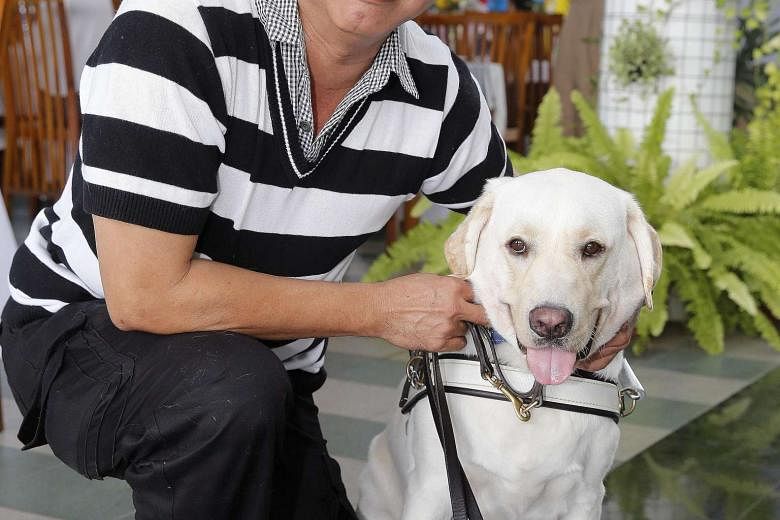The process of getting a guide dog in Singapore for a person with visual disability has been made easier since the Guide Dogs Association of the Blind (GDAB) came across an accredited guide dog mobility instructor here.
Previously, anyone interested in owning a guide dog would have to travel overseas to places such as Melbourne to be trained together with the dog under the supervision of an instructor, because no such training was available here.
All seven guide dogs in Singapore were bred overseas, and up until last year, were trained overseas, too.
That was until 34-year-old Ms Zara Linehan, an accredited guide dog mobility instructor from Britain, moved to Singapore last October due to her husband's work commitments.
She then joined the GDAB and is now its guide dog mobility instructor.
Her first task in January was to train Jordie, a two-year-old Australia-born male labrador retriever.
"It is important to teach the guide dog what its role is, and get it to learn to take responsibility," said Ms Linehan, who has seven years of experience training guide dogs.
"Obedience training is a big part of training a guide dog. The dog needs to know its responsibilities when its harness is on."
Yesterday, the association held a graduation ceremony for Jordie and his owner, Mr Gary Lim, 55.
Mr Lim was diagnosed with glaucoma in his 30s, but he was able to continue working in the construction sector as the condition affected only his right eye.
However, a sudden rapid deterioration of his condition two years ago plunged his world into darkness.
"I had to quit my job, as I was not able to read and get around on my own," said the father of two.
Through a church friend, Mr Lim was introduced to agencies working with people with disabilities. From there, he found the GDAB and attended its orientation and mobility training, and learnt how to get around with a cane.
"I wasn't sure about getting a guide dog at first. I worried about controlling the dog and maintaining it," said Mr Lim, who now works at a charity employing people with visual disabilities.
"But I interacted with some guide dogs and found that they are very obedient and calm. That was when I decided to get one."
The GDAB sponsored the training fees, while Mr Lim bears the cost of maintaining Jordie.
The dog was matched to him in March, and Ms Linehan spent about three weeks training the two of them together.
Recounting an incident when he first got Jordie, Mr Lim said: "We were walking and then, suddenly, Jordie turned to the left. I didn't follow, and ended up knocking into a pillar."
But over the months, Mr Lim has built a strong bond with Jordie.
"I often say Jordie is my third son. Jordie guides me everywhere. He can recognise steps, doors, lifts, escalators and gantries. I feel lost when I'm out without him."
Including Jordie, there are now seven guide dog teams in Singapore. Four are clients of the GDAB.
Ms Vanessa Loh, its general manager, said: "Some people are still fearful of big dogs. But with seven guide dog teams here, we hope the increased visibility will lead to greater awareness and acceptance of guide dogs, and how they help the visually disabled."


